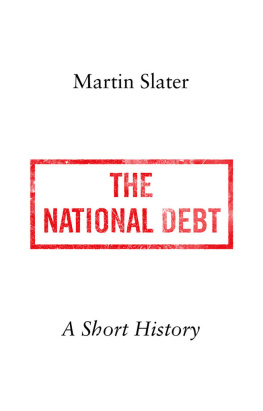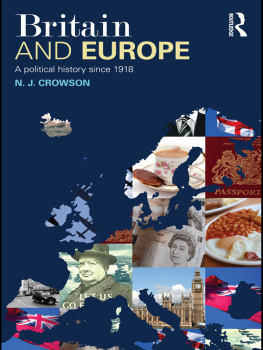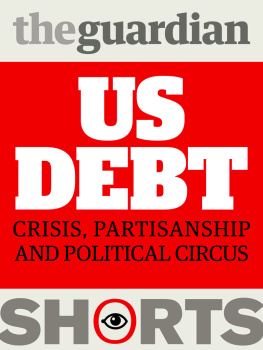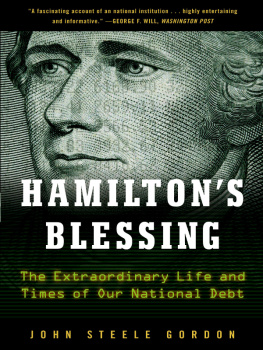
Slater has done a superb job, combining a fantastically clear explanation of what the National Debt actually is with an entertaining account of its history. This remarkably readable book will appeal to many a concerned citizen.
Evan Davis
Short, clear and readable. Slater shows how the National Debt has been enveloped in a miasma of misunderstanding and misinformation, and valiantly sets out to clear up the mess.
Robert Skidelsky
A tremendously satisfying book. Slater does not just recount and enliven history; he also explains the evolution of economic theories that influenced politicians, divided economists, and that continue to fire up public debate. A must-read for all those concerned by austerity.
Ann Pettifor, author of The Production of Money
A comprehensive and comprehensible explanation of Britains National Debt over the centuries. Slater provides much-needed perspective on why, and when, our government should borrow.
Alistair Darling, Chancellor of the Exchequer, 20072010
A fascinating tour of British economic history.
Jonathan Portes, author of 50 Capitalism Ideas You Really Need to Know
Slater has written insightfully about one of the biggest economic issues of our times. Placing the National Debt in its historical context, this book is a must-read on whether our debt levels are too high.
Linda Yueh, author of The Great Economists


Oxford University Press is a department of the University of Oxford. It furthers the Universitys objective of excellence in research, scholarship, and education by publishing worldwide. Oxford is a registered trade mark of Oxford University Press in the UK and certain other countries.
Published in the United States of America by Oxford University Press 198 Madison Avenue, New York, NY 10016, United States of America.
Martin Slater 2018.
All rights reserved. No part of this publication may be reproduced, stored in a retrieval system, or transmitted, in any form or by any means, without the prior permission in writing of Oxford University Press, or as expressly permitted by law, by license, or under terms agreed with the appropriate reproduction rights organization. Inquiries concerning reproduction outside the scope of the above should be sent to the Rights Department, Oxford University Press, at the address above.
You must not circulate this work in any other form and you must impose this same condition on any acquirer.
Library of Congress Cataloging-in-Publication Data
Names: Martin Slater.
Title: The National Debt: A Short History / Martin Slater.
ISBN 9780190914530 (print)
ISBN 9780190934828 (updf)
ISBN 9780190935047 (epub)
For Paul, Fiona, Emma,
Chloe and Luke
and children and grandchildren everywhere
CONTENTS
FIGURES
TABLES
BOXES
I am indebted to many individuals for their help and support in the writing of this book. My daughter Fiona encouraged me in the concept and worked unceasingly to interest the publishing industry in it. Gerard Lally and Michael Kell valiantly read the whole manuscript at different stages and provided exceptionally valuable feedback. Thanks too to various editors and publishers reviewers for valuable comments, and particularly to Jim Ferguson and to Michael Dwyer and Jon de Peyer of Hurst Publishers, who ultimately brought the project to fruition.
Stephen Broadberry and Nicholas Dimsdale guided me to the most up-to-date sources of economic historical data.
Other thanks are due to Linda Yueh, Adam Swallow, Sir Ian Byatt, Sir Jon Shortridge, Wes Williams, the Press Officers at DMO, John-Mark Considine and Gareth McKeever.
I would also like to thank the University of Oxford, my college St Edmund Hall, and my colleagues therein, for the supportive and wide-ranging academic environment throughout my career.
Above all I am grateful for the support and forbearance of my wife Lucy Newlyn.
In 2014, I was asked to contribute to a day of commemoration at my collegeSt Edmund Hall, University of Oxfordto mark the centenary of the outbreak of the First World War. As an economist, this was not really my subject at all, but eventually I offered to give a short talk on John Maynard Keynes and his role in the financing of the war. In the course of researching the talk I was struck first by the colossal economic cost of the war, second by the consequent explosion of National Debt, and third by the complicated web of international indebtedness which blighted the subsequent peace. All these continue to have an effect on our lives even to the present day. The story was shocking enough in its own right but it also had an uncomfortable resonance for the post-2008 economic climate in which the issue of national and international debts was becoming increasingly prominent, and indeed strident.
So after the talk I thought I should find out more about the evolution of Britains National Debt beyond the narrow window of the First World War. But this was not as easy as I had imagined it would be. There were surprisingly few accessible books written by economists on the subject, and particularly no current overview of its complete history. The most recent such overview I could find was by Eric Hargreaves, The National Debt, published in 1930. It was a useful starting point. From there I discovered the magna opera of many distinguished historians, like Chandaman, Dickson, Brewer, Ferguson, Daunton, and Wormell, each targeting some sub-period of the debts history. My debt to all these and other writers is immense. But again, none provided a complete overview, and their very large erudite tomes are not for the faint-hearted. Economists, too, have written extensively on national debt problems, but their approach is usually very technical and analytical, and usually more about general principles than specific instances, so again this produces little that is really accessible to the general reader.
Hence the genesis of this book. It is a combination of economics and history, and it is the fate of most such books not wholly to satisfy the professional experts of either constituency. My apologies in advance to them. But for the wider reading public I hope it will stimulate interest in an otherwise forbidding subject and make some contribution towards a better-informed general discussion of a crucial economic policy decision, one particularly fundamental to our democratic institutions.
We can be fairly precise about the data on the National Debt itself, even back to the very earliest days. For obvious reasons Parliament was always intensely concerned about the Debt and called for regular reports on its progress. There can be disagreements at the margin about what should go in and what should remain outside the definition of the National Debt (and some of these disagreements are encountered in the course of the book), but the core numbers provided from parliamentary reports and government statistical sources are well agreed.
However, Parliament always measures the Debt in the money of its own time, and the value of money has obviously changed enormously over the very long period of time covered by this book. The current Debt of 1.7 trillion is almost incomprehensible at an individual level; but how should this be compared to, say, the original loan of 1.2 million from the Bank of England in 1694 (see )? 1.2 million would hardly buy a small house in central London nowadays.
Next page














